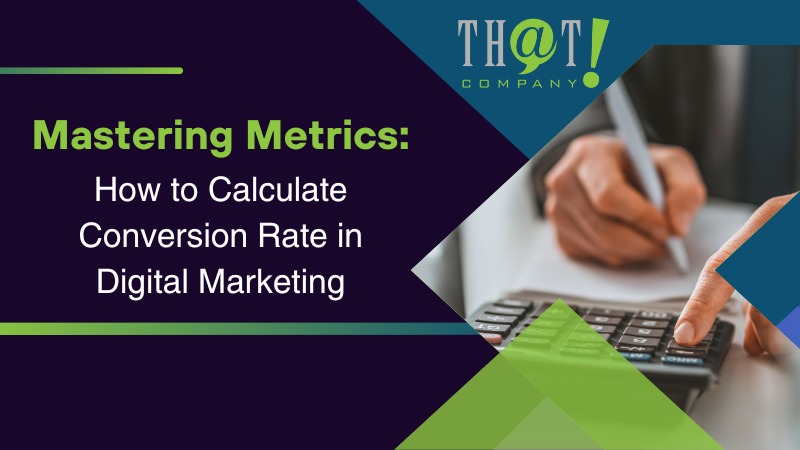
If you’re asking ‘how to calculate conversion rate in digital marketing’, you’re seeking a key metric that measures the success of your digital campaigns. Calculating your conversion rate is straightforward: It’s the percentage of visitors who achieve your defined goal. This article demystifies the process succinctly, preparing you to track and enhance your digital marketing efforts effectively.
Key Takeaways
- Conversion rate is a critical KPI in digital marketing that measures the number of users who perform a desired action divided by the total visitors, enabling businesses to gauge the success of web pages and apps.
- The conversion rate formula is Total Conversions / Total Visitors x 100; calculating it requires defining conversion goals, collecting relevant data, and applying the formula while avoiding UX pitfalls that can deter conversions.
- Optimizing conversion rates involves strategies such as A/B testing, improving user experience, and personalization, which are crucial for transforming visitors into customers and should be continuously adapted over time.
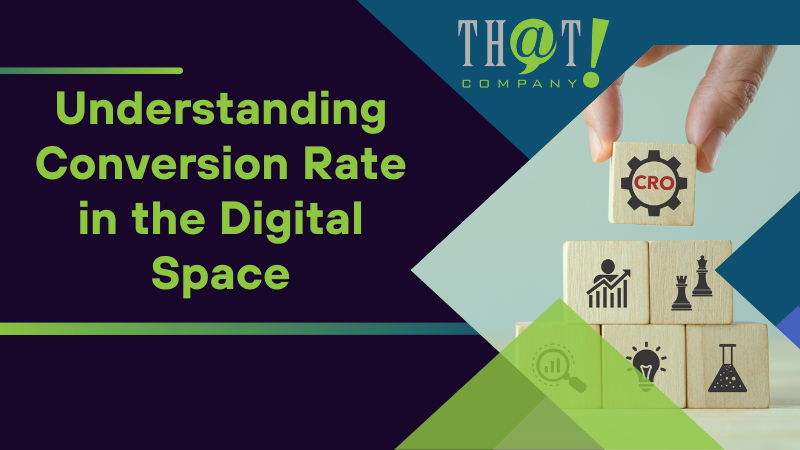
Understanding Conversion Rate in the Digital Space
The conversion rate is comparable to a business’s heartbeat, teeming with useful knowledge about your marketing strategy. It’s calculated by dividing the number of individuals who fulfill a desired action by the total number of individuals who engage with specific content. But conversion rate isn’t just a figure. It’s a key performance indicator that monitors the performance of web pages and apps, tracking how many users accomplish business-driving goals.
A well-tuned conversion rate can be a powerful engine, driving business growth. With improved conversion rates, businesses can:
- Reap more sales from the same amount of traffic
- Increase return on investment (ROI)
- Potentially reduce advertising costs or reinvest additional revenue into new marketing strategies
Calculating conversion rates allows businesses to base their marketing efforts on sound judgment, and knowing how to calculate conversion rates can further enhance their strategies. By calculating conversion rates, businesses can make data-driven decisions and optimize their marketing campaigns.
Therefore, prioritizing conversion rate optimization and implementing influential strategies like introducing new messaging and search engine optimization is paramount for attaining business objectives and supporting the sales team.

The Conversion Rate Equation: A Step-by-Step Guide
The journey to mastering conversion rates begins with understanding its calculation. It’s a process that involves defining what a conversion means for your business, gathering the necessary data, and applying the conversion rate formula.
We will analyze this process and reveal the principles behind these calculations.
Identifying Your Conversion Goals
Every business, like every individual, has unique aspirations. In the context of digital marketing, these aspirations materialize as conversion goals. A conversion could mean:
- becoming a lead for a business
- finalizing a sale transaction for an e-commerce business
- hitting specific engagement metrics for businesses that depend on ad revenue from page views
Therefore, understanding your business’s unique nature and setting specific conversion goals is the first step in deciphering conversion rates.
From a broader perspective, typical conversion goals encapsulate purchasing a product, signing up for a newsletter, or completing a form. But when setting these goals, it’s important to factor in the desired number of visitors to take the intended action, the size of your target audience, and a realistic estimation of the total number of visitors your business can attract.
Gathering the Necessary Data
After setting the conversion goals, the subsequent step involves collecting the necessary data to compute the conversion rate. It’s like assembling the puzzle pieces – every piece of data brings the bigger picture into focus. To do this, you need to identify the total traffic pool and measure conversions based on the defined conversion goals.
In this data collection journey, CRM data plays a significant role. It tracks the progression of deals through various stages, enabling the calculation of conversion rates based on the journey of deals from the initial to downstream stages. Considering diverse data sources during the comparison of conversion rates is also significant. This holistic approach provides a comprehensive understanding of customer interactions and leads to more precise and informed comparisons.
Applying the Conversion Rate Formula
Once the conversion goals are established and the data is collected, you can utilize the conversion rate formula. It’s a simple yet powerful equation: Total Conversions / Total Visitors x 100. In this equation, conversions represent the number of desired actions completed by users, while visitors refer to the total number of people who visit your website.
Applying this formula is straightforward – divide the total number of conversions by the total number of website visitors and multiply by 100 to get the percentage. But while applying the formula, it’s crucial to avoid common pitfalls like:
- slow page load times
- poor website design
- complicated checkout/sign-up processes
- neglecting mobile users.
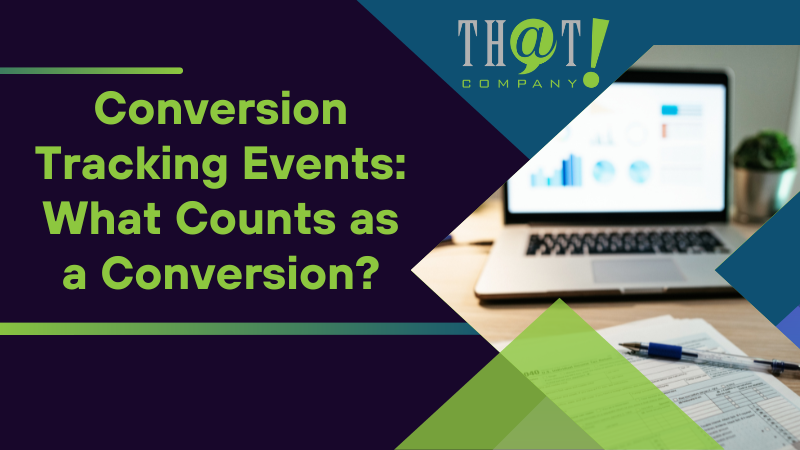
Conversion Tracking Events: What Counts as a Conversion?
In digital marketing, a conversion could be any intended action a user is encouraged to take, such as clicking on a button, completing a purchase, or filling out a form. These actions are typically categorized into micro conversions on websites and common conversion events in email marketing.
Form submissions, for instance, can serve as a conversion event through the establishment of conversion tracking. This makes measuring any action as a conversion possible, provided an event is specified for that action. Then there are product purchases, which enable us to quantify the effectiveness of product sales and monitor conversions originating from advertisements or free listings.
We can even consider downloads as a conversion event by configuring a specific event in analytics tools.

Sales Conversion Rate: Understanding Its Importance
While conversion rate is a critical metric in digital marketing, a more specific metric – the sales conversion rate – is a powerful tool for evaluating sales performance effectiveness. The sales conversion rate is calculated by dividing the total sales by the total number of qualified leads and multiplying the result by 100. This metric, along with other conversion rate measures, allows businesses to evaluate the efficacy of:
- campaigns
- tools
- messaging strategies
- channels
- other elements
Achieving a high sales conversion rate can yield numerous advantages for a business. These include:
- Improved customer understanding
- Reduced acquisition costs
- Better utilization of existing website traffic
- An effective sales process that effectively generates leads and closes deals
- Enhanced profitability
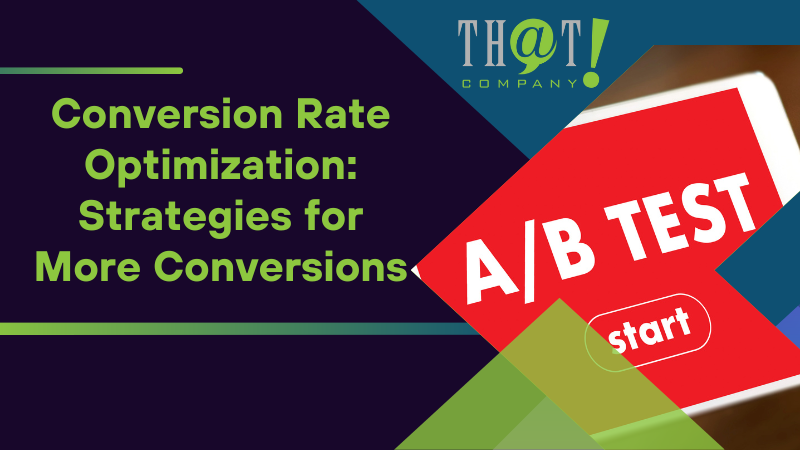
Conversion Rate Optimization: Strategies for More Conversions
Optimizing your conversion rate is like tuning an engine for peak performance. It involves strategies that enhance your website or app’s ability to convert visitors into customers.
We will analyze these strategies in depth and understand their contribution to increasing conversion rates.
A/B Testing for Higher Conversion Rates
A/B testing is a methodological process used to compare two or more web page versions to determine which one yields a higher conversion rate. It’s like experimenting with your website as the test subject. You can test a broad range of website elements like:
- headings
- subheadings
- social media links
- variables within these categories include font size, font color, button placement, and background color.
Conducting A/B tests allows you to pinpoint website areas with high bounce rates or low engagement. Utilizing tools such as Google Analytics, you can collect data and implement changes based on the results of the tests. Consequently, A/B testing allows businesses to compare different versions of a webpage and identify the one that results in a better conversion rate.
User Experience and Conversion Impact
The user experience is like the compass guiding a visitor’s journey through your website. A well-designed user experience can significantly impact conversion rates, creating a seamless and intuitive user journey that leads to heightened conversions. However, several user experience (UX) issues can harm conversion rates. These issues encompass:
- Slow loading times
- Confusing navigation
- Cluttered layouts
- Complicated designs
Contrastingly, making website navigation easier can positively influence conversion rates. It enhances user engagement, reduces bounce rates, and streamlines sales. So, a well-designed user experience can be a powerful tool in pushing your conversion rates to new heights.
Personalization Techniques to Boost Conversions
In the era of customization, personalization techniques have emerged as a potent tool to boost conversions. These techniques can range from:
- tailoring content according to the visitor’s time of visit
- geo-location
- referral source
- offering real-time personalization
- sending customized newsletter emails
One such technique involves incorporating dynamic content on a website. It tailors the content to different audience segments, making the customer experience more relevant and intuitive. This encourages engagement and leads to an increase in successful conversion actions.
Likewise, customized messaging can boost conversion rates through:
- Creation of messages that align with specific demographics
- Application of psychological principles in targeting
- Content optimization for SMS campaigns
- Strategic placement of well-crafted CTAs to stimulate conversions.

Analyzing Conversion Over Time: Consistency Matters
Conversion rates, like the seasons, can fluctuate over time. Analyzing conversion rates over consistent periods is essential for precise performance tracking, trend identification, and evaluation of the long-term effectiveness of different marketing strategies. The industry commonly uses a weekly or monthly basis to measure conversion rates, enabling marketers to compare against previous periods and analyze trends.
Companies such as Proof track conversion rates weekly, which helps them keep a continuous overview of their performance and effectively spot short-term trends. To thoroughly analyze conversion rates over time and extract actionable insights, companies employ a range of tools, including:
- HelloBar
- HotJar
- InstaPage
- ConvertBox
- OptinMonster
- OmniConvert
- Google Analytics
- CrazyEgg

Comparing Conversion Rates: Industry Benchmarks
Comparing your conversion rates against industry standards is like comparing your speed to the speed limit – it aids in evaluating your performance and establishing achievable targets. It’s essential to compare conversion rates to industry benchmarks for evaluating performance and setting achievable targets.
Thoroughly researched studies and reputable sources, such as Statista and Baymard, can assist in defining website conversion rate benchmarks and key performance metrics for various industries. The industry average conversion rate is determined by dividing the number of conversions by the total number of visitors or leads generated and then multiplying the result by 100. However, the variation in conversion rates across different industries can be attributed to factors such as:
- The effectiveness of landing pages
- Traffic sources
- Product pricing
- Market trends
- The nature of the business category itself
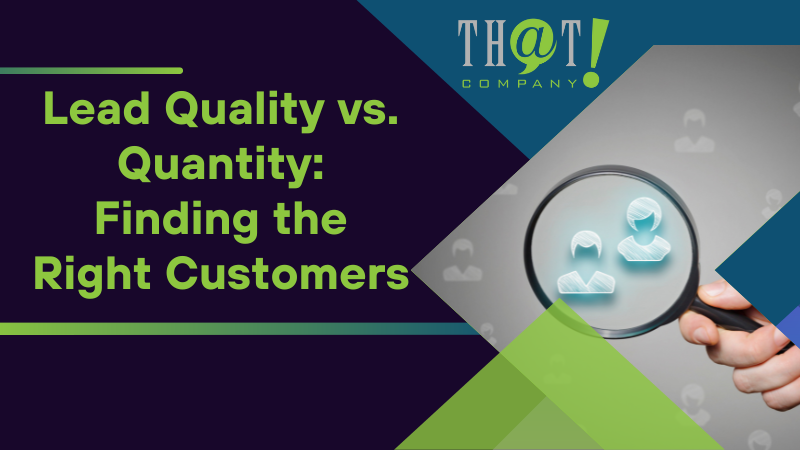
Lead Quality vs. Quantity: Finding the Right Customers
Finding the right equilibrium between lead quality and quantity is crucial in pursuit of higher conversion rates. Lead quality pertains to the readiness of a lead to engage in a purchase, whereas lead quantity denotes the volume of leads obtained through marketing endeavors.
The quality of leads substantially impacts conversion rates, as efficiently qualifying leads and prioritizing high-quality leads can lead to an increase in conversion rates. On the other hand, the quantity of leads can significantly impact conversion rates. High-quality leads are more likely to convert into opportunities, whereas low-quality leads have a lower likelihood.
Consequently, profiling the target audience significantly contributes to:
- improving lead quality
- enabling the creation of more focused marketing campaigns
- better resource allocation
- improved conversion rates
- building enduring customer relationships.

How That! Company Can Help Your Agency Grow
That! Company offers a wide array of white label services, including:
These services can assist white label agencies in increasing profitability by taking on various tasks, such as delivering reports and engaging directly with clients. They also support agencies in broadening their service offerings by providing a comprehensive range of marketing services, enabling them to concentrate on their core competencies.
Furthermore, That! Company assists agencies in the sales process by initiating preliminary discussions with prospective clients, providing sales materials, and helping in closing agreements. By managing private label campaigns and reputation strategies, they aid agencies in increasing their revenue.
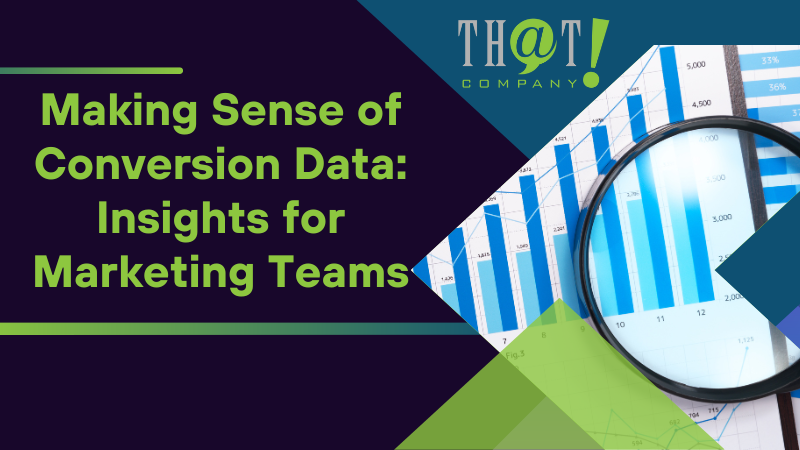
Making Sense of Conversion Data: Insights for Marketing Teams
Deciphering conversion data is like reading a map – it guides you toward better marketing decisions. Marketing teams can thoroughly examine conversion data to recognize patterns and trends that may signify areas for potential improvement.
Methods for improving marketing campaigns encompass:
- Detailed data collection
- Selection of effective marketing channels
- Creation of personalized advertisements
- Establishment of a robust content strategy
- Refinement of brand messaging
- Creation of engaging landing pages
- Enhancement of site navigation and usability
- Testing of diverse calls-to-action (CTAs)
- Fine-tuning of crucial elements of the website.
For effective analysis and interpretation of conversion data, marketing teams can use tools like Google Analytics, Adobe Analytics, and HubSpot Analytics.

Conversion Rate Myths Debunked
Myths and misconceptions can cloud our understanding of conversion rates. For instance, exclusively focusing on conversion rate may not ensure enhanced business performance. Marketers should prioritize considering other factors and adopting a data-driven approach to make well-informed marketing decisions.
Likewise, a higher conversion rate doesn’t necessarily lead to improved business outcomes. It’s important to consider multiple factors besides conversion rate when evaluating overall business performance. Another common misconception is that Conversion Rate Optimization focuses solely on testing and is considered a one-time project. Conversion Rate Optimization is a continuous process that extends beyond testing.
Another misconception is that SEO by itself can result in higher conversion rates. While SEO is crucial for attracting visitors, improving conversion rates requires a thorough strategy and accurate data.

Summary
In the digital marketing landscape, the conversion rate is a powerful compass, guiding businesses toward growth and success. Understanding its importance, learning to calculate it, optimizing it, and debunking the myths surrounding it can lead to more effective marketing strategies, higher sales, and, ultimately, business growth. The journey to mastering conversion rate is not a sprint but a marathon, requiring continual analysis, optimization, and learning. So, as you stride towards your business goals, remember to keep the compass of conversion rate close to hand.

Frequently Asked Questions
What is the formula for rate conversion?
To calculate the conversion rate, divide the number of conversions by the total number of visitors. For example, if a website had 1,000 visitors and 50 customer orders, the conversion rate would be 5.0%.
What is a good conversion rate for digital marketing?
A good conversion rate for digital marketing is generally considered above 10%, with some businesses achieving an average of 11.45%. Industry-specific conversion rates can vary, but aiming for a 10% or higher rate can provide a competitive edge in the marketplace.
What is the formula for conversion value in marketing?
The conversion rate in marketing is calculated by dividing the number of conversions by the total number of visitors, giving you a percentage. For example, if there were 50 customer orders out of 1,000 site visitors, the conversion rate would be 5.0%.
How do you calculate a conversion rate?
To calculate a conversion rate, you would divide the number of conversions by the total number of visitors or interactions and then multiply by 100 to get a percentage. For example, if you had 50 conversions from 1,000 interactions, your conversion rate would be 5%.
What is the significance of conversion rate in digital marketing?
The conversion rate in digital marketing is crucial as it indicates how successful your efforts are in turning website visitors into customers. Tracking this metric helps you evaluate the effectiveness of your marketing strategies.



























 Talk With Us
Talk With Us  Give Some Love
Give Some Love 


